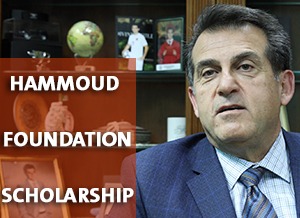اقامت الجالية اللبنانية في الولايات المتحدة الامريكية - ميشيغن حفل توقيع كتاب "بنت جبيل ذكريات مصورة"، و افتتاح معرض "بنت جبيل في الذاكرة" وذلك باحتفال أقيم في نادي بنت جبيل الثقافي في ديربورن، حضره المفتي العلامة السيد مهدي الامين، رئيس نادي بنت جبيل الحاج علي حمود، مديرة مدرسة "Maples"، وعدد من اعضاء النادي وفعاليات اغترابية ودينية واجتماعية من مدينة بنت جبيل وجوارها.
افتتح الاحتفال بكلمة ترحيبية من عضو اللجنة الثقافية في النادي الأستاذ عدنان بيضون الذي اثنى على جهود معدا الكتاب حسن بيضون ووضاح جمعة، ثم كانت افتتاحية الحفل بكلمة من رئيس النادي الحاج علي حمود، و بعده تحدث المفتي العلامة السيد مهدي الأمين اعتبر فيها ان الكتاب يعتبر انجازاً تاريخياً لبنت جبيل، ثم كانت كلمة باللغة الانجليزية من مترجمة الكتاب الأستاذة فاطمة بزي فرج ركزت فيها على أهمية الكتاب في المجتمع الاغترابي وخصوصاً لجيل الشباب. بعدها تحدثت السيدة فاطمة جابر بيضون اعتبرت فيها ان هذا الكتاب "يستعيد بعضاً تاريخ عريق ينحدر من خوابي التراث العاملي، هو خطوة اولى نحو عمل جاد يفترض ان نبدأه فرديا وجماعيا وعلى مسؤولية الجميع، لنبش الذاكرة الجماعية لبنت جبيل، لننقلها او لنحفظها على الاقل الى اجيال جديدة اخرى تعيش في غربة قهرية، وختمت جابر كلمتها بالشكر لكل من ساهم في اعداد الكتاب ولنادي بنت جبيل الثقافي، مؤسسات الامام الصدر في ميشيغن، و للسيد فادي بيضون الذي قدم طباعة الكتاب، وللوسائل الاعلامية والصحفية التي واكبت انطلاقة الكتاب بينهم جريدة صدى الوطن في اميركا، الوكالة الوطنية للاعلام اللبنانية، جريدة السفير، جريدة النهار، جريدة الاخبار، موقع بنت جبيل الالكتروني والمواقع الالكترونية ساهمت بالتغطية الاخبارية عن الكتاب.
واختتم الاحتفال بجولة على المعرض الذي ضم اكثر من 30 صورة جائت من وحي الكتاب ومن ثم جرى بيع الكتاب للحاضرين الذين ابدو اعجابهم الشديد بما يحتويه الكتاب من ذكريات جميلة خلدت بهذه الذكريات المصورة.
كلمة ا. فاطمة بزي فرج في الاحتفال
It’s an honor to have all of you here tonight. Honored guests, Bint Jbeil Cultural Center Board Members, Alolamaa, Ahl bint jbeil, thank you for being here tonight to help promote and encourage this special documentary, your Book, bint jbeil Captured Memories. I thank you all on behalf of all the contributors to this project.
Knowing our history and where we come from helps define who we are. In the United States, almost every family has a story to tell about their cultural heritage and where they came from. There is no doubt that books such as this one will help serve this purpose. I believe that we should instill in our children the feeling of pride to their country of where we come from. I will focus on how our children can benefit most from this book.
This documentary collection marks important dates, serves as illustrations of how Bint-Jbeil’s social environment has evolved, and helps us remember a time in our lives when things were different; either for better or worse. They evoke a feeling of deep connection to our place of origin and the desire to reconnect and stay focused on issues related to our homeland. The richness of the photos lies in the fact that they are black and white and date between 1852 and 1980
It is designed to entertain the entire family. It includes graphic representation of our grandparents’ memories as they lived in an era of rich political and social events. These pictures illustrate our fathers’ bedtime stories, childhood games, neighborhood gatherings, political and social events, and other memories. Indeed, they are still vivid memories for many of us and our children can learn from them.
Our children’s comments and questions as they skim through the pages of Bint Jbeil’s Captured Memories, may become the subject of our stories that otherwise will not be told.
Although I was born and raised in Bint Jbeil, I was fascinated by the captions when I was helping with the translations. Language skills are not an obstacle
for our children as all the captions are translated and facilitated in a language they can understand.
Publishing such book was a very smart idea or project and it’s become even more compelling after Bint Jbeil made headlines across major media outlets. It demonstrates how In spite of the hardships the town was through during the last century when agriculture, manufacturing and dyeing shoes were the two main sources of living in Bint-Jbeil. a sense of community still dominated the villager’s social life in the absence of machinery and materialistic world. Skimming through the confetti of photos, the reader will realize that Bint-Jbeil truly earned the distinguished attention it deserves; the town of the poets, the writers, the brave, and the free.
This book contains “heartfelt comments” from all participants from the pieces that were written in Arabic, the English Introduction, to the captions. It was compiled in a very unique way to show our children what we mean when we tell the stories of their homeland.
Please do not deprive our children from the opportunity to learn about their hometown. Believe me this book is appealing enough to your children that they want to look and ask questions about our beloved town. The pictures are compelling enough to paint a picture of the specific events.
Placing a copy of this book in your family room will generate discussions and Bint Jbeil will then become the subject of the Sahra (gatherings), especially that long winter nights have just kicked in. I have one in my office and believe me it’s become a subject of discussion as visitors leave my office which brings warmth to my heart as I discuss Bint Jbeil with others.
Finally, I would like to thank all the contributors to this valuable project. Special thanks to Mr. Hassan Baydoun and Mr. Waddah Joumaa who initiated and coordinated this project. I am certain that this documentary will entertain the reader and especially the one who longs to sense and live the old life of Bint-Jbeil.
Good luck with more projects in the future!
باقي التفاصيل في التقرير المصور من 85 صورة




























































































